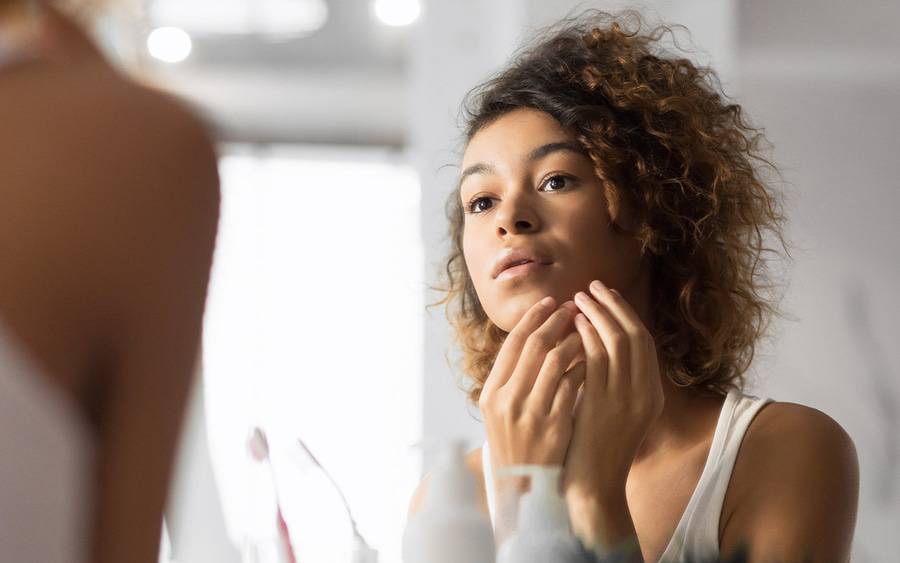Targeted Acne and Acne Scars Treatment: Redeem Your Clear Skin
Targeted Acne and Acne Scars Treatment: Redeem Your Clear Skin
Blog Article
Checking Out Skin Conditions: Identifying and Dealing With Acne Scars for Healthier Skin
Acne scars represent a significant problem for individuals seeking to maintain healthy and balanced skin, as they can impact both appearance and self-esteem. Recognizing the numerous types of marks, from atrophic to hypertrophic, is necessary for figuring out suitable treatment alternatives. While professional treatments like chemical peels and microneedling can be efficient, the significance of individualized care strategies can not be overemphasized. Preventative steps play a vital function in minimizing future scarring. As we explore these elements, one should consider how the best strategy can lead to transformative outcomes.
Comprehending Acne Marks
Recognizing acne scars is critical for anybody who has actually experienced severe acne, as these marks can have an enduring influence on both physical appearance and emotional well-being. Acne scars develop when the skin undertakes inflammatory responses during energetic acne lesions. The extent of scarring is often influenced by elements such as the kind of acne, its period, and private skin characteristics.
The body's natural healing process can lead to either atrophic scars, which show up as clinical depressions in the skin, or hypertrophic marks, which are raised and result from overproduction of collagen. Additionally, the mental toll of acne scars must not be taken too lightly; many individuals report feelings of embarrassment, anxiety, and lowered self-esteem. This psychological worry can affect social interactions and overall lifestyle.
Addressing acne scars needs a comprehensive understanding of their development and influence. Recognition of the possibility for long-lasting repercussions related to without treatment scars can motivate people to look for suitable treatments. Early treatment and reliable monitoring techniques can substantially enhance skin appearance and boost emotional durability, emphasizing the significance of comprehending the complexities bordering acne scars.
Sorts Of Acne Marks
Acne scars can be categorized right into unique types, each showing special features and needing particular treatment strategies. The main kinds of acne marks include atrophic, hypertrophic, and keloid marks.

Hypertrophic scars, on the other hand, are increased over the skin degree and are the outcome of excessive collagen production during the recovery procedure. They normally continue to be within the boundaries of the original acne lesion. Keloid scars are similar yet expand beyond the original injury site, forming larger, increased locations that can be painful or itchy.
Comprehending these kinds of scars is necessary for selecting appropriate treatment alternatives. Different marks may respond better to details treatments, such as laser therapies, fillers, or medical interventions, stressing the significance of a customized approach to acne mark administration.
Determining Your Scars
When examining the look of your skin, it is critical to properly identify the kind of scars existing, as this will certainly notify the most effective treatment approach. Acne marks usually drop into two categories: atrophic and hypertrophic marks. Atrophic marks, which are one of the most typical, look like depressions or impressions on the skin. These can better be identified into ice-pick scars, boxcar marks, and rolling scars, each exhibiting distinctive features and needing different approaches for assessment.
Hypertrophic marks, on the other hand, are elevated and happen due to extreme collagen production throughout the healing procedure. Acknowledging the details functions of your marks-- such as depth, appearance, and size-- is crucial for appropriate recognition. Additionally, think about the distribution of scars across your skin, as this can suggest the severity and duration of the acne problem.
Involving with a skin specialist can give important understandings into the nature of your scars, assisting in the differentiation between different kinds. An extensive understanding of your scars will eventually cause an extra tailored and efficient therapy strategy, making certain a clearer and healthier skin tone.
Therapy Alternatives Available
Determining the certain kind of acne scars present on your skin lays the groundwork for exploring efficient treatment alternatives. Common kinds of acne scars include atrophic (clinically depressed), hypertrophic (elevated), and post-inflammatory erythema.
For atrophic scars, choices such as chemical peels, microneedling, and laser resurfacing are commonly used. Chemical peels utilize acids to remove the outer layer of skin, promoting brand-new cell development.
Hypertrophic marks can be treated with corticosteroid shots to flatten the scar or laser therapy to minimize inflammation and enhance appearance. acne and acne scars treatment. Silicone gel sheets and pressure dressings may additionally help in taking care of raised marks
Furthermore, facial fillers can briefly fill in clinical depressions from atrophic scars, while surgical excision might be ideal for serious situations. Each treatment choice has its considerations and advantages, making it vital to speak with a skin specialist. They can provide individualized suggestions based on the kind and seriousness of your scars, along with your skin type and total health and wellness.
Tips for Prevention
Efficient prevention strategies can significantly lower the probability of establishing acne marks. The initial step is to keep a consistent skin care routine that consists of gentle cleaning, exfoliation, and moisturizing. Using non-comedogenic products assists prevent clogged up pores, which can intensify acne. In addition, incorporating topical therapies consisting of salicylic acid directory or benzoyl peroxide can properly lessen and manage outbreaks swelling.
Staying clear of need to choose or pop acne lesions is vital, as this can lead to deeper skin damage and raise the danger of scarring. Rather, consider utilizing published here a chilly compress or over-the-counter treatments to decrease swelling and inflammation.
Sun security is one more essential facet of prevention; ultraviolet (UV) rays can darken scars and impede the healing process. Applying a broad-spectrum sunscreen with a minimum of SPF 30 daily can shield the skin and advertise also healing.
Finally, preserving a well balanced diet plan rich in vitamins, minerals, and antioxidants supports skin wellness and recovery. Staying moisturized and taking care of tension degrees can also play a substantial role in reducing acne flare-ups. By carrying out these strategies, individuals can significantly minimize their opportunities of establishing acne marks.

Final Thought
In final thought, understanding and identifying acne scars is crucial for effective therapy and attaining much healthier skin. Numerous kinds of acne marks, consisting of hypertrophic and atrophic marks, require certain treatments customized to individual needs.
The body's all-natural healing process can result in either atrophic marks, which show up as depressions in the skin, or hypertrophic marks, which are increased and result from overproduction of collagen. They are more split into three subtypes: ice choice scars, boxcar marks, and rolling scars. Acne marks normally fall right into 2 classifications: atrophic and hypertrophic marks. These can even more be identified right into ice-pick scars, boxcar marks, and rolling scars, each showing unique her latest blog characteristics and calling for various techniques for assessment.
Numerous types of acne scars, consisting of atrophic and hypertrophic scars, demand certain interventions tailored to specific requirements.
Report this page